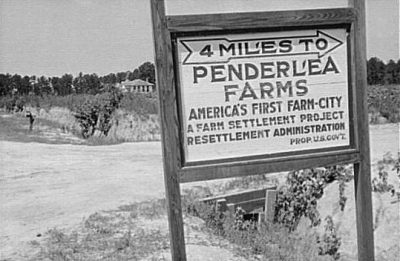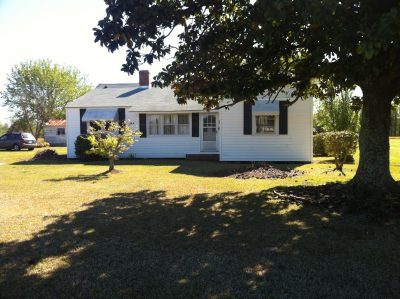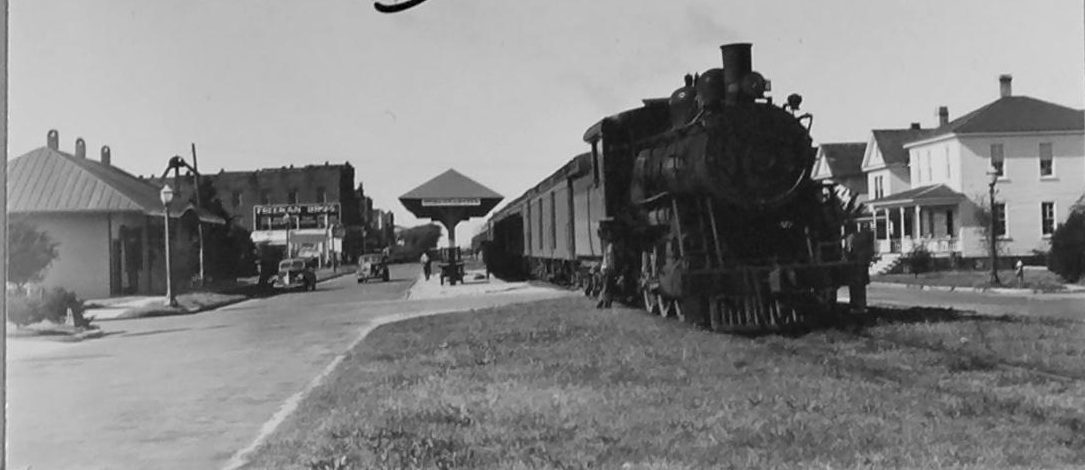
If you’re driving through Penderlea in Pender County, it looks like a lot of small towns. There are houses, farms and signs inviting former residents, who have now spread all over the country, back for a homecoming visit. But there is also a uniquely American history threaded throughout the community. This spot was the first of 152 homestead projects developed in 1934 under President Franklin Roosevelt’s New Deal. And it was here that down-on-their-luck farmers came during the Great Depression to try to make a better life for their families.
“Penderlea started during a hard time,” said Pattye Marks Ebert, president of the Penderlea Homestead Museum board of directors. Her family moved to the area in the early 1940s. “We grew flowers. Lilies for Easter and gladiolas.”
Supporter Spotlight
She remembers the community building and how important the school was to the area, and reading Shakespeare in the school library. Most of all, though, she remembers people willing to work hard.
“So many of them come back to visit,” she said. It’s the hope that more of them will return this weekend, for the annual Homestead Day. In the past, the event has included music, barbecue, and speakers. But mostly, she said, it’s a way for people to connect with the Penderlea’s history.
Getting its start
Before Penderlea was under federal guidance, it was a project of Wilmington industrialist and real estate developer Hugh MacRae. MacRae is a controversial figure in local history, said David Haase, who is the museum board’s vice president. MacRae worked to oust blacks from city government and played a significant role in instigating the deadly Wilmington race riot of 1898. He left his mark on the Southeastern North Carolina in other ways, too.
“He started St. Helena, Marathon, New Berlin and Castle Hayne,” Haase said. MacRae worked to recruit residents to six farming communities in the early 1900s. Castle Hayne in New Hanover County was settled primarily by Dutch farmers and the first inhabitants of St. Helena in Pender County were Italian. The Columbus County community of New Berlin eventually became known as Delco. MacRae proposed that the Penderlea site was be ideal for a homestead community to the U.S. Department of the Interior, sold the property to the government, and became the first manager of Penderlea Homestead Farms, Inc.
The community was laid out in horseshoe pattern around what would be a community center and school. At first, families were located on 10-acre plots that each faced a road. A scale model at the museum shows each homestead had modern house equipped with electricity and running water, a barn, poultry house, a hog house, and a combination wash and smoke house.
“There were 144 houses, and about five or six floor plans,” Haase said. “About 88 remain today.”
A New Deal

MacRae oversaw the project until 1934, and at that time only 1,500 acres had been cleared and 10 houses built. During the next few years, the project was overseen by different government agencies and plans revamped. The first group of official homesteaders moved there during the fall of 1936. Homesteaders were typically poor farmers who had to be approved and medically fit, according to “The Roots of Penderlea: A Memory of a New Deal Homestead Community,” by Ann Cottle, who is also curator of the museum.
For this New Deal community, the families were also white and Protestant. They were furnished with livestock, seed, feed and fertilizer. Much of what was need to make a farming town thrive was also built during this time – a 23-acre school (with an auditorium, gymnasium, cafeteria, and library) and a community center with a clinic, a home for teachers, a potato curing house, a cane-syrup mill, a cannery, a gristmill and a furniture shop.
One of the community’s proudest moments is when First Lady Eleanor Roosevelt visited in the summer of 1937. According to accounts of the visit, she was gracious, danced with many of the men and said she was proud of the project. Townspeople wrote and performed a pageant for their high-profile guest. The museum has re-printed copies of the program, complete with vintage advisements. More economic possibilities came to Penderlea when it was selected as a site of a hosiery mill financed by the Farm Security Administration in 1938.
Preserving History
Beginning in the 1940s, though, the nation’s economy began to change – and so did the community’s. Both Haase and Ebert said there’s a misconception that the Penderlea project was a failure. “There were flaws in the design, and some of the initial farms were too small to be sustainable,” Ebert said. “That part of the plan did not work. But to call the Penderlea a failure implies that there’s nothing there.”
Penderlea is still the site of a farming community, although many of the farms have consolidated and are larger now. It was, and is, a tight-knit community that worked and played together.

There is much to be proud of in this history, Haase said. He didn’t grow up in Penderlea, but has a fascination with the time period of the 1920s and ’30s. He became involved with the museum more than 10 years ago. The Penderlea Homestead Museum began in an administration building in 1998 began to push for recognition from the National Register of Historic Places. A committee found that the entire farm city community was eligible for consideration and Penderlea Historic District was listed in 2013. Today, the museum and its artifacts reside in one of the first homestead buildings.
Learn More
- For more information on the Penderlea Homestead Museum, call 910-604-1616 or visit the museum’s website







